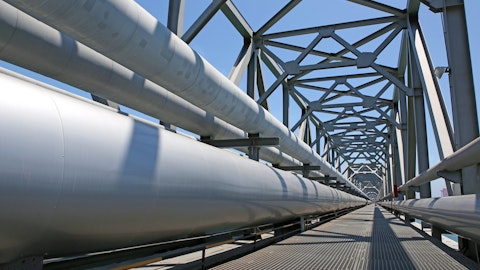In this article, we will take a look at the 15 Countries With The Highest Average Carbon Dioxide Emissions Per Person. You can skip our detailed discussion on the problem of climate change and go to the 5 Countries With The Highest Average Carbon Dioxide Emissions Per Person.
Aside from the pandemic, one of the most serious challenges that the world is facing today is the life-threatening effects of climate change. Today the effects of global climate change are more evident as Glaciers are sinking, sea levels are rising, persistent extreme weather changes are affecting millions across the globe. What scientists were predicting before is already happening before our eyes. Human emissions of carbon dioxide together with water vapors, nitrous oxide, and methane contribute to the greenhouse effect that causes climate change. According to NASA, human activities such as cement production, burning of coal and other fossil fuels, deforestation, landscape changes have increased the atmospheric carbon dioxide concentration by 47% since the Industrial Revolution started.
Global Emission Trends
Energy-related and industrial activities hold the biggest share of the pie accounting for 60% of human-caused greenhouse gas discharges worldwide. However, there is some hope. The expanding usage of solar, wind and other renewable energies flattened the global carbon dioxide emission to approximately 33 gigatonnes (Gt) in 2019 based on the global emissions report by the International Energy Agency (IEA). On the other hand, the global emissions of carbon dioxide from coal use lowered by approximately 200 million tonnes (Mt) in the same year. Data from the IEA suggests that the power sector led the ongoing clean energy transition and contributed to lowering the harmful carbon dioxide emissions. Global carbon dioxide emissions dropped in 2020 due to lockdown policies imposed in many countries. In April 2020, the daily CO2 emissions were approximately at the level they were in 2006.
However, the world will need to do a lot more to save itself from the existential threat of the climate change.
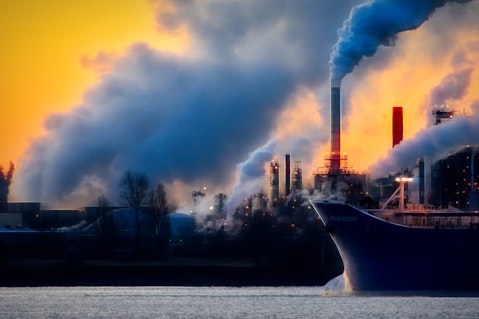
Pixabay/Public Domain
How to Save the World From Climate Crisis?
While the world cannot stop climate change overnight, we can slow down the rate and further damages of global warming by reducing human emissions of carbon dioxide and other atmospheric greenhouse gases. Scientists are counting on renewable energy as a major solution to tackle the problem of climate change.
In 2015, 196 parties signed the “Paris Agreement,” which aims to limit global warming preferably to 1.5 degrees Celsius. On the other hand, NGOs, innovators, companies, and scientists developed the “Exponential Roadmap” intending to cut the global greenhouse gas emissions by 50% by 2030 by following 36 scalable solutions that will touch different sectors including energy, transportation, industrialization, building, and construction, food consumption and natural-based solutions.
Countries with the Highest Average Carbon Dioxide Emissions Per Person
The world’s largest carbon dioxide emitters per capita are the major oil-producing countries, especially countries. Hence you will notice that most of the countries with the highest average carbon dioxide emissions per person on our list are from the Middle East. To give you the most accurate insights about the 15 countries with the highest average carbon dioxide emissions per person, we sourced our ranking from the latest data in 2019 from the Emissions Database for Global Atmospheric Research (EDGAR). The data only contains values for fossil-fuel generated carbon dioxide emissions which is the largest contributor to climate change.
Also, as the data is on a per-person basis, you will find a lot of countries on this list which have smaller population sizes.
Let’s start our list of 15 countries with the highest average carbon dioxide emissions per person.
15. Kazakhstan
Carbon dioxide emission from fossil fuel per capita in 2019: 14.92 tonnes
Carbon dioxide emission from fossil fuel in 2019: 277.365 million metric tonnes
The Republic of Kazakhstan is a transcontinental country lying between Central Asia and Eastern Europe. Kazakhstan ranks 15th on our list of the countries with the highest average carbon dioxide emissions per person. The country’s economy is heavily dependent on fossil fuels. Around 16% of Kazakhstan’s GDP came from oil revenues in 2018, while 67% of its merchandise exports in 2019 were fuel. According to the IEA, in 2019, about 90% of national electricity was obtained from fossil fuels. Coal accounted for 70% of electricity generation and natural gas accounted for 20%.

Maxim Petrichuk / Shutterstock.com
14. Turkmenistan
Carbon dioxide emission from fossil fuel per capita in 2019: 15.23 tonnes
Carbon dioxide emission from fossil fuel in 2019: 90.523 million metric tonnes
Turkmenistan ranks 14th on our list of the 15 countries with the highest average carbon dioxide emissions per person with a population of 5.9 million in 2019. The desert country has the fourth-largest natural gas reserves in the world. Also, Turkmenistan’s top industries are construction and chemical as it has an abundant supply of petroleum, gypsum, limestone, and cement.
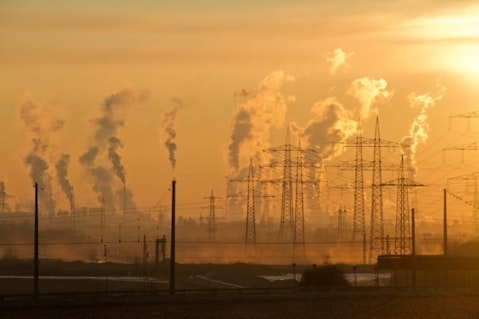
13. United States
Carbon dioxide emission from fossil fuel per capita in 2019: 15.52 metric tonnes
Carbon dioxide emission from fossil fuel in 2019: 5.1 billion metric tonnes
Ranking 13th on our list of the countries with the highest carbon dioxide emissions per person is the United States. The U.S. together with China and the European Union is one of the biggest carbon dioxide emitters in the world. Based on the data recorded by the U.S. Energy Information Administration in 2019, approximately 46% of U.S. energy-related carbon dioxide emissions came from consuming petroleum fuels, 33% came from using natural gas, and 21% came from burning coal. The oil and gas industry plays an important role in the American economy. According to the analysis of the U.S. Energy and Employment Report, the traditional and energy efficiency sectors have employed about 6.7 million Americans because the United States is one of the largest oil and gas exporters in the world, housing the biggest oil giants including Chevron (NYSE: CVX), ExxonMobil (NYSE: XOM), and ConocoPhillips (NYSE: COP).
During his candidacy in July 2020, President-elect Biden Harris announced his $2 trillion climate change plan focusing on sustainable infrastructure and clean energy utilization. Biden will be investing in building modernized roads and bridges, electricity grids, water systems, and universal broadband. Biden plans to boost the auto industry by supporting domestic auto supply chains and infrastructure and creating 1 million new jobs in the automobile industry. To reach a carbon-free power system by 2035, the president’s climate change agenda involves producing low-cost clean energy and American-made electricity.
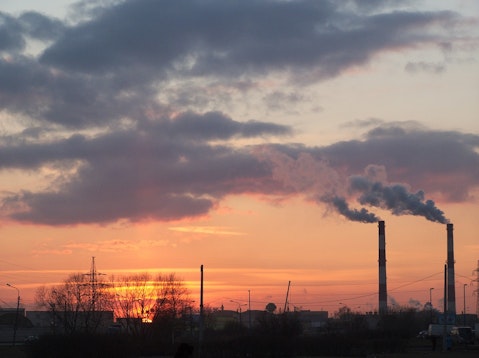
Pixabay/Public Domain
12. Canada
Carbon dioxide emission from fossil fuel per capita in 2019: 15.69 metric tonnes
Carbon dioxide emission from fossil fuel in 2019: 584.846 million metric tonnes
Ranking 12th on our list of the 15 countries with the highest average carbon dioxide emission per person is Canada. Canada is one of the wealthiest countries in the world with its economy backed by the manufacturing and service sectors which include trade, finance, and transportation. Canada set a net-zero emission target for 2050 in 2019, but it has yet to enforce that target in law or lay down a plan to achieve it.
In March 2020, the Government of Canada released a $200 billion Economic Response Plan COVID-19, which aims to help individuals and enterprises address the immediate health and financial impact of the pandemic. During the pandemic, Canada allotted CA$1.72 billion to clean up inactive oil and gas wells. Also, the government has funded CA$750 million to support the oil and gas sector to reduce methane and other emissions.
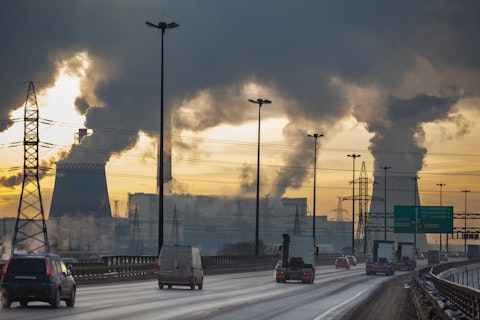
Kekyalyaynen / Shutterstock.com
11. Brunei
Carbon dioxide emission from fossil fuel per capita in 2019: 15.98 metric tonnes
Carbon dioxide emission from fossil fuel in 2019: 7.020 million metric tonnes
As an oil-rich country, Brunei is one of the biggest emitters of carbon dioxide per capita in the world. Brunei’s economy is almost entirely dependent on the exploitation of its massive oil and gas reserves. In the third quarter of 2020, Brunei had a GDP of $2.96 billion from which 45% was contributed by the oil and gas industry. Brunei in 2020 unveiled 10 key strategies under the Brunei Darussalam National Climate Change Policy to reduce 20% of the greenhouse gas emissions by 2030.
10. Luxembourg
Carbon dioxide emission from fossil fuel per capita in 2019: 16.31 metric tonnes
Carbon dioxide emission from fossil fuel in 2019: 9.740 million metric tonnes
Located in northwestern Europe is one of the smallest countries in the world, Luxembourg. In the past decade, the country saw substantial growth in economy and population. Luxembourg relies on fossil fuels and imported energy supply. The government has established ambitious targets for the energy sector, including a 50% to 55% reduction in greenhouse gas emissions by 2030. One of the innovative solutions the country is imposing is the use of electric vehicles to reduce carbon dioxide emissions and fuel imports. The Modu 2.0 Sustainable Mobility Strategy sets out the objective of increasing the use of public transport by 50% from 2017 to 2025 and identifies measures to improve the quality of electrified public transport, including investment in parks and ride centers linked to major bus and train infrastructure remodeling.

9. Australia
Carbon dioxide emission from fossil fuel per capita in 2019: 17.27 metric tonnes
Carbon dioxide emission from fossil fuel in 2019: 433.379 million metric tonnes
Australia ranks 9th on our list of the countries with the highest average carbon dioxide emissions per person. According to the Australian Industry and Skills Committee, the construction industry generates about $360 billion in income accounting for about 9% of Australia’s GDP. The construction industry is one of the highest contributors of carbon dioxide emissions through the production of construction materials and energy use. The Australian government has decided to pursue a gas-led recovery rather than a green recovery in which Canberra guaranteed funding of a new 1,000MW gas-fired power station in New South Wales. The plan also includes an $8.4 million budget for priority pipelines and a $20.7 million budget for research studies on gas extraction in New Territory and Queensland.
While the lockdowns in Australia reduced carbon footprints in 2020, they had no significant effect on energy sector emissions during the first wave of the pandemic, as mining and mineral processing operations continued.
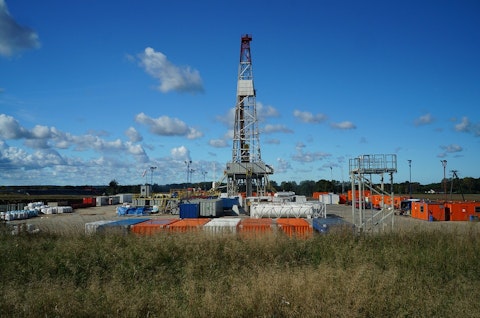
Pixabay/Public Domain
8. Saudi Arabia
Carbon dioxide emission from fossil fuel per capita in 2019: 18 metric tonnes
Carbon dioxide emission from fossil fuel in 2019: 614.607 million metric tonnes
Ranking 8th on our list of the countries with the highest average carbon dioxide emissions is the Kingdom of Saudi Arabia. It possesses about 16% of the world’s proven petroleum reserves, and ranks as the largest exporter of petroleum. In the fourth quarter of 2020, Saudi Arabia’s economy jumped 2.8% according to the report of the General Authority for Statistics (GASTAT). With a GDP of more than $790 billion in 2019, Saudi Arabia boasts the largest economy among Arab countries.
Saudi Arabia’s crude oil exports fell to six million barrels per day in May 2020, reduced from ten million in April, as global demand for oil and gas fell during the pandemic.

Fedor Selivanov/Shutterstock.com
7. Oman
Carbon dioxide emission from fossil fuel per capita in 2019: 18.55 metric tonnes
Carbon dioxide emission from fossil fuel in 2019: 92.781 million metric tones
Since 1967, when Oman started exporting oil, petroleum has been the driving force of the country’s economy. In 2019, Oman had a GDP of $76.3 billion. Oman’s modern and complex infrastructure, which includes electric utilities, bridges, public education, and medical services, is supported by the oil industry. Oman also has the largest natural gas reserves.
By 2030, Oman’s National Energy Strategy aims to generate 30% of its electricity from renewable sources.
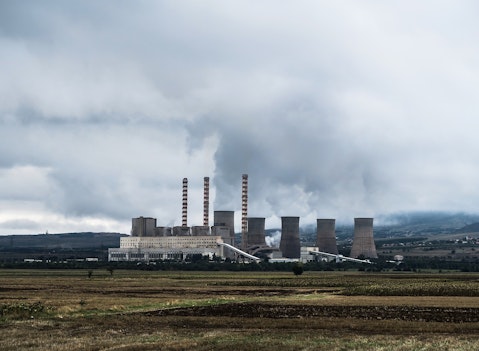
Pixabay/Public Domain
6. Bahrain
Carbon dioxide emission from fossil fuel per capita in 2019: 21.64 metric tonnes
Carbon dioxide emission from fossil fuel in 2019: 35.438 million metric tonnes
Bahrain has few petroleum reserves despite being in one of the world’s most essential oil-producing regions. Bahrain’s economy is focused on the processing of crude oil from its neighboring countries. The country had a GDP of $38.5 billion in 2019. Bahrain’s cabinet has approved the National Renewable Energy Action Plan, which aims to achieve a renewable energy target of 5% by 2025 and 10% by 2035 through the integration of solar, wind, and waste-to-energy solutions.
Click to continue reading and see the 5 countries with the highest average carbon dioxide emissions per person.
Suggested articles:
- 10 Activist Stocks To Consider For Investors
- 15 Most Valuable Australian Companies
- Billionaire Steve Cohen’s Top 10 Stock Picks
Disclosure: None. 15 Countries With The Highest Average Carbon Dioxide Emissions Per Person is originally published at Insider Monkey.

